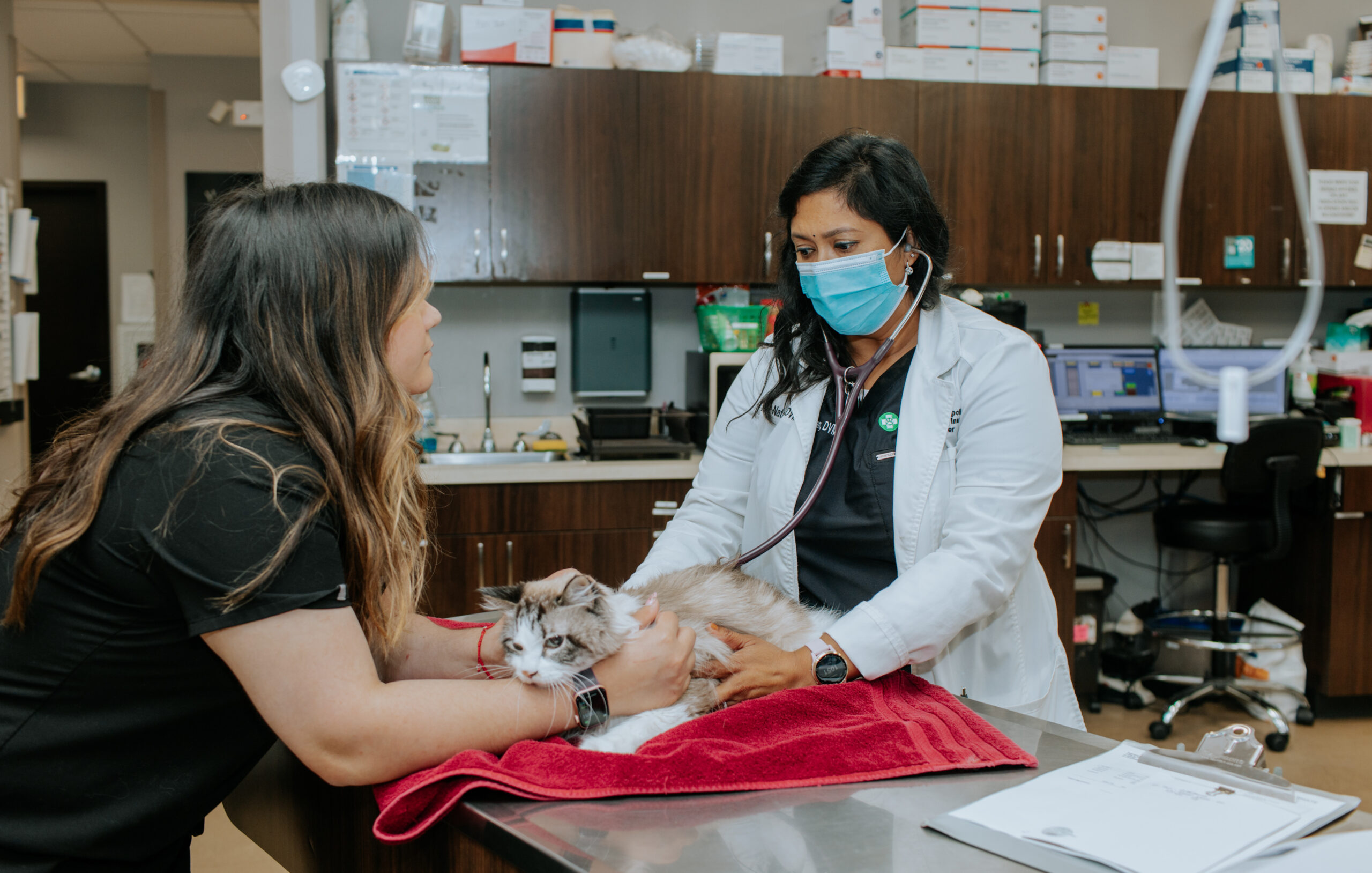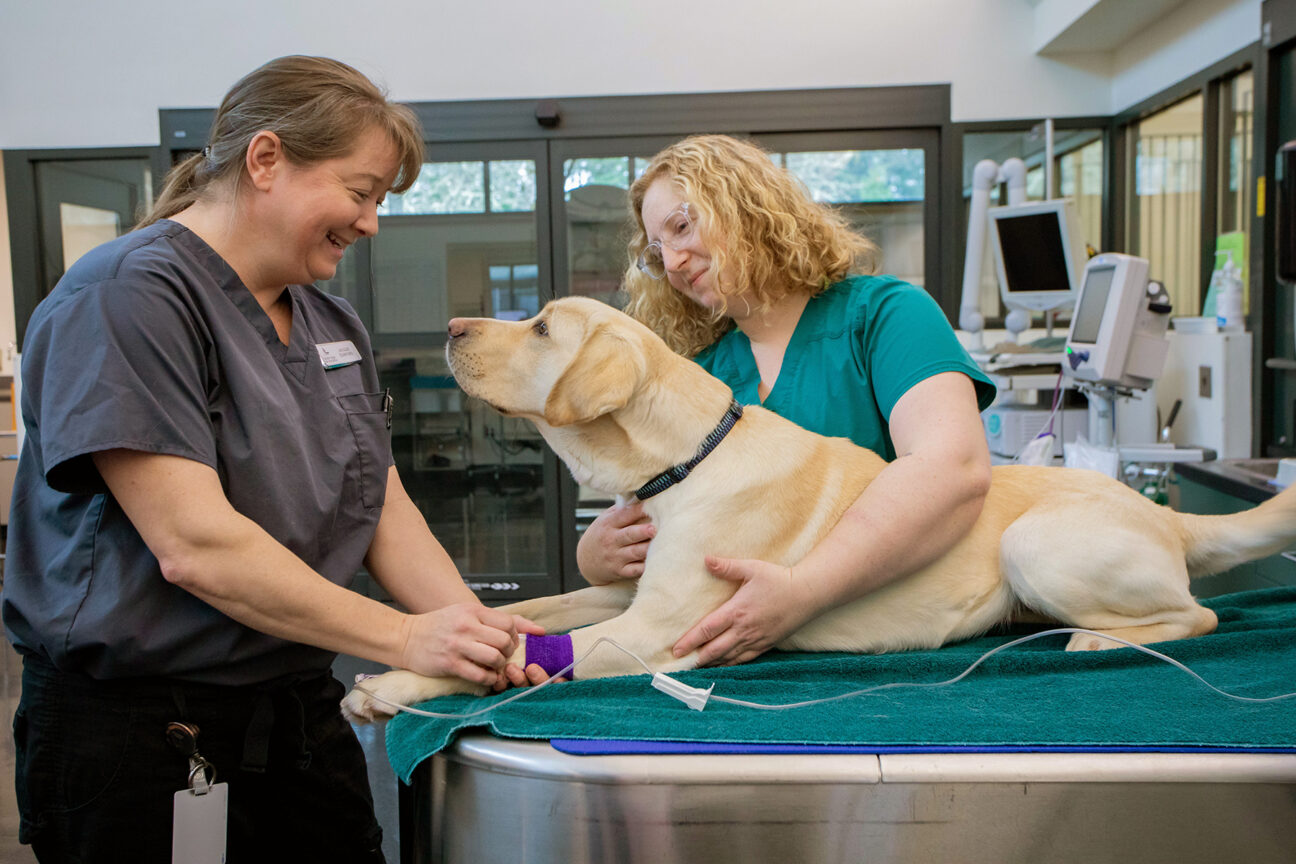A Veterinarian’s Insight Into Long-Term Outcomes of tplo surgery
Wiki Article
Everything About Veterinarian Surgery: Comprehending the Significance of Expert Treatment for Your Family pets
Vet surgical treatment is an important component of pet health care. It incorporates different procedures, from regular elective surgeries to immediate interventions. Understanding the complexities of these surgical procedures can assist pet dog owners make educated choices. The prep work, execution, and recovery phases are important for making certain the health of pets. With proper expertise, owners can navigate the complexities of veterinary treatment. What variables should be considered before a pet dog goes through surgical treatment?Kinds Of Veterinarian Surgeries
When an animal calls for surgical intervention, understanding the different sorts of vet surgeries can help pet owners make notified choices. Vet surgical procedures can be generally classified into 3 major kinds: elective, urgent, and emergency situation surgeries. Elective surgical procedures, such as spaying or neutering, are prepared procedures that are not immediately dangerous. Immediate surgeries, like those for foreign body elimination, should be performed quickly but are not life-threatening in the minute. Emergency surgical procedures, such as those dealing with severe trauma or inner blood loss, are crucial and call for instant attention.Additionally, surgical procedures can vary in complexity, ranging from minimally invasive laparoscopic procedures to more substantial open surgical procedures. Each kind of surgical procedure brings its own dangers and recuperation procedures. Understanding these groups allows pet owners to involve in significant conversations with veterinarians, causing much better end results for their beloved animals.Getting ready for Your Animal's Surgical treatment
Planning for an animal's surgery involves a complete list to assure all essentials are covered. Efficient interaction with the vet is important for recognizing the procedure and any type of essential pre-operative actions - canine tplo surgery. In addition, having clear post-operative treatment directions will certainly help proprietors offer the very best assistance for their recovering animalsPre-Surgery Checklist Fundamentals
Assuring a smooth surgical experience for a pet calls for mindful preparation and attention to information. A pre-surgery list is important for pet dog owners to comply with. First, verifying the arranged surgical treatment day and time is important. Owners need to also confirm that their animal has fasted according to the veterinarian's guidelines, normally for 8-12 hours prior to surgical treatment. Collecting required clinical records, including inoculation background, is very important for the veterinarian's review. It is also suggested to prepare a comfy area at home for the pet dog's healing after surgical procedure. Finally, owners ought to have a prepare for transportation to and from the vet center, making certain that the animal is secure and comfy throughout the journey. Adhering to these actions can substantially enhance the surgical experience.Communicating With Your Vet

Effective communication with the vet is vital for a successful surgical experience for pet dogs. Owners ought to be prepared to discuss their pet dog's case history, consisting of any type of pre-existing conditions, drugs, and allergic reactions. This info helps the veterinarian evaluate threats and tailor the medical plan as necessary. In addition, animal owners should ask questions concerning the procedure, anesthetic, and anticipated end results to ensure they completely understand the procedure. Making clear any kind of questions can ease stress and anxiety for both the animal and the proprietor. It is likewise important to connect any behavioral modifications or concerns observed in the animal leading up to the surgical procedure. Inevitably, clear discussion promotes trust and collaboration, making certain that family pets get the very best possible treatment throughout their surgical trip.
Post-Operative Care Directions
After going over the procedure with the veterinarian, family pet owners must focus on post-operative care instructions to promote a smooth recuperation for their pet dogs. These guidelines commonly consist of keeping track of the medical website for indications of infection, such as redness or discharge. Family pets may need to be kept tranquil and constrained to stop extreme activity that might disrupt recovery. Pain management is essential, so proprietors must adhere to the vet's guidance on carrying out medicines. In addition, nutritional constraints might be suggested to prevent intestinal upset. Normal follow-up visits are essential to assure proper recovery and deal with any type of concerns. By sticking to these post-operative care instructions, pet dog proprietors can considerably contribute to their animal's healing and overall wellness.The Surgical Process Explained
The surgery for pets encompasses critical actions that guarantee their security and recovery. Pre-surgery preparations are essential for decreasing dangers, while post-operative treatment standards play a vital function in promoting recovery. Comprehending these parts assists pet owners navigate the medical experience a lot more successfully.Pre-Surgery Preparations
Prior to a pet undertakes surgical treatment, numerous vital prep work should take location to guarantee a safe and successful treatment. First, a comprehensive veterinary exam is vital to examine the pet's total health and wellness and identify any kind of potential threats. This may include blood tests, imaging, or various other diagnostics. The vet will also go over anesthetic alternatives customized to the pet dog's specific requirements. In addition, pet dog owners are usually instructed to withhold food and water for a specified time before surgery to decrease the danger of difficulties during anesthetic. It is essential for owners to offer a complete medical background, including any type of medications or allergic reactions, making sure the medical group has all needed information. Appropriate communication and adherence to pre-surgery guidelines can considerably enhance the end result of the treatment.Post-Operative Care Guidelines
Proper post-operative care is vital for ensuring a pet's recuperation following surgery. After the procedure, pets ought to be checked closely for any type of signs of problems, such as too much bleeding, swelling, or unusual actions. It is essential to follow the vet's instructions regarding medications, consisting of painkiller and prescription antibiotics. Family pets should be maintained in a quiet, comfortable atmosphere to reduce stress and anxiety and promote healing. Restricting activity is crucial; short, leashed strolls might be essential, yet leaping or running ought to be prevented. Routine follow-up visits must be scheduled to analyze the recovery process. In addition, the surgical site has to be maintained tidy and completely dry, with any type of indicators of infection reported to a vet without delay. Following Get the facts these guidelines enhances healing results.Anesthetic and Pain Monitoring
Efficient anesthetic and discomfort monitoring are important parts of vet surgery, ensuring that family pets remain comfortable and risk-free throughout the procedure. Veterinarians evaluate each family pet's private requirements, thinking about aspects such as age, weight, health and wellness standing, and the kind of surgery being performed.Anesthesia protocols usually consist of a combination of pre-anesthetic medicines, induction agents, and inhalant anesthetics, permitting exact control over the pet's level of consciousness. Monitoring during surgical procedure is crucial; veterinarians constantly observe essential indicators to resolve any kind of potential problems promptly.Pain management strategies might include opioids, non-steroidal anti-inflammatory medications (NSAIDs), and anesthetics, customized to the family pet's specific situation. This complex technique helps lessen pain and promotes a smoother medical experience. By prioritizing efficient anesthetic and pain monitoring, veterinary specialists improve the overall welfare of pet dogs undertaking surgeries, ensuring they receive the greatest standard of treatment.Post-Operative Treatment and Recovery
Complying with surgical procedure, the emphasis shifts to post-operative treatment and recuperation, which is crucial for making certain a family pet's safe return to typical tasks. During this period, family pets require a quiet, comfortable environment to aid healing. Proprietors ought to carefully check their family pets for any kind of indications of pain or unusual behavior.Veterinary standards commonly include details instructions related to medication administration, wound care, and dietary adjustments. It is vital to abide by these referrals to reduce complications and promote recovery. Pet dogs may require to be restricted from energetic tasks, such as running or jumping, throughout their recuperation period (emergency vet).Regular follow-up visits with the vet permit tracking of the family pet's development and timely adjustments to the treatment plan. Giving psychological assistance and companionship can also boost a pet's recovery experience, helping to reduce tension and anxiety. In general, persistent post-operative care plays a considerable role in achieving a successful recuperationIdentifying Complications After Surgical Procedure
Exactly how can family pet owners recognize difficulties after surgical treatment? Understanding of particular indications is vital for guaranteeing the health of pet dogs during recuperation. Common indicators include excessive swelling, redness, or discharge at the surgical website, which might represent infection. In addition, consistent discomfort, suggested by whining or reluctance to relocate, need to motivate instant interest. Changes in appetite or water intake can additionally suggest issues; a decline in these habits may signal pain or distress.Moreover, family pet owners need to monitor their animals for any kind of uncommon behavior, such as sleepiness or problem breathing, as these can be indications of significant problems. Throwing up or looseness of the bowels complying with surgical treatment may require urgent veterinary analysis. Recognizing these complications early can greatly affect a pet's recuperation process, stressing the importance of vigilance and timely communication with a vet for any type of concerning symptoms.The Role of Vet Specialists in Surgical Care
Vet experts play an essential role in guaranteeing the security and success of operations for pets, especially complying with surgery when keeping an eye on and treatment are extremely important. These specialists include vets, vet service technicians, and assistance personnel, all of whom contribute specialized abilities to the medical process.Before surgery, veterinarians perform complete analyses to analyze the pet's wellness, making certain that any underlying conditions are managed. Throughout the treatment, the medical team offers anesthesia, preserves sterilized environments, and monitors key signs, all essential for minimizing risks.Post-operative care is just as significant; veterinary professionals observe for difficulties, take care of discomfort, and guide owners on healing techniques. Their expertise allows them to recognize early signs of distress or infection, ensuring prompt intervention. Eventually, the joint initiatives of vet experts in medical treatment foster a safe environment, promoting the health of pet dogs throughout the medical journey.
Often Asked Concerns
Just how Do I Pick the Right Veterinary Surgeon for My Pet dog?
Choosing the appropriate veterinary surgeon entails investigating qualifications, checking out evaluations, and examining the center's environment. It is necessary to assess the specialist's experience with More hints details treatments and their communication style when making a choice.What Prevail Misconceptions About Vet Surgeries?
Usual false impressions concerning vet surgeries consist of beliefs that they are constantly risky, unneeded, or for emergency situations. Many pet owners ignore the advantages of preventive procedures and the skill associated with veterinary surgical care.Just How Much Will My Pet's Surgical treatment Cost?
The expense of a family pet's surgical treatment can differ considerably based on aspects such as the sort of procedure, the veterinarian's experience, and geographic area (emergency vet). Generally, More Bonuses costs range from a few hundred to a number of thousand bucks
Can My Pet Dog Eat Prior To Surgery?
Before surgical treatment, it is usually encouraged that pet dogs avoid eating for a specific duration. This fasting helps minimize the threat of issues during anesthetic. Proprietors ought to consult their vet for specific guidelines customized to their pet dog's needs.What happens if My Pet Dog Has Pre-Existing Health Conditions?
When an animal has pre-existing health and wellness conditions, it's important for the veterinarian to evaluate these variables prior to surgical procedure. This examination guarantees suitable preventative measures are taken, decreasing threats and optimizing the animal's general safety throughout the treatment.Report this wiki page